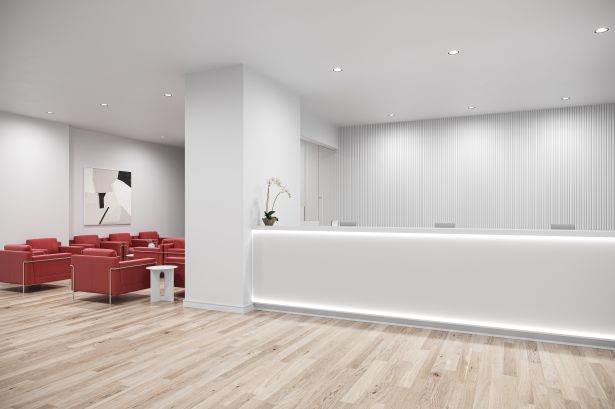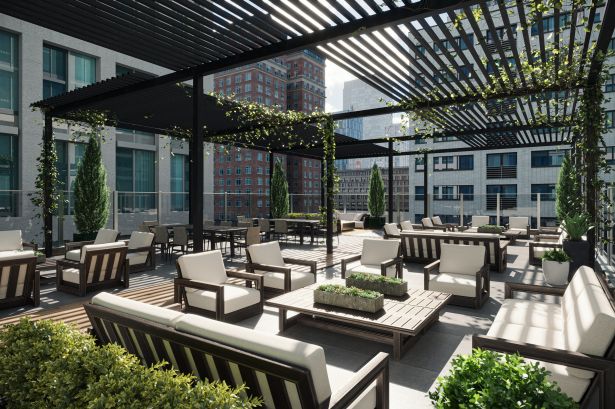Presented By: The Moinian Group
Forty Years On, The Moinian Group Has Success With Office-to-Residential Conversions
By The Moinian Group December 27, 2022 10:55 am
reprints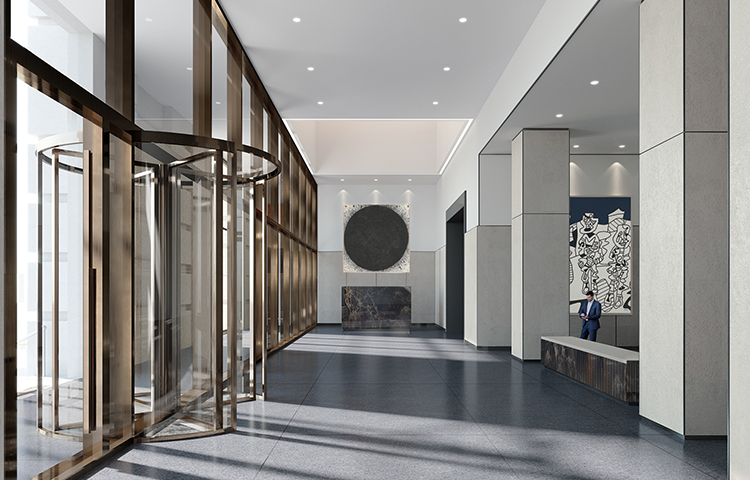
The Moinian Group, one of the largest privately held real estate groups in the U.S., with a portfolio of over 20 million square feet, is celebrating its 40th anniversary of developing and managing Class A residential and commercial real estate projects. To honor this milestone, Partner Insights spoke with Ted Koltis, head of commercial leasing for The Moinian Group, about some of the company’s recent projects, including several office-to-residential conversions.
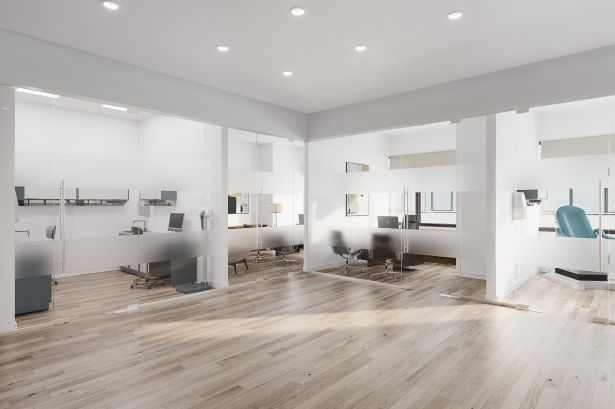
Commercial Observer: What are some of the key trends Moinian is seeing right now, and is the company changing how it designs and markets its buildings in response?
Ted Koltis: Over the past few years, we embarked on a strategy of upgrading lobbies and also creating a new design for prebuilding office space. We’ve done a tremendous amount of leasing this year, and almost all of that has been launched by these initiatives. We furthered our strategy by prebuilding larger spaces than we had in the past in order to generate activity, and we’ve seen the results of that in a very positive way. We’ve announced several full-floor deals in our larger buildings this year, from 60 Madison Avenue to 535-545 Fifth Avenue. So it’s not that we’re changing direction, but we’re upgrading and doubling down on our strategy of building space on spec.
Moinian is actively considering office-to-residential conversions. Given how hot a topic these are in CRE today, tell us about this.
We’re considering conversions at two locations downtown where we have past experience with this strategy: on John Street and at Battery Place. While it’s common knowledge that the office market is supply heavy at this point, there remains a fair lack of supply on the residential side. But also, given work-from-home, reduced office footprints, and the flight-to-quality, where tenants are really trending toward either new or heavily-renovated properties, we considered that we would undertake conversion from office to residential on assets that we think are less attractive to the market — Class B properties that are well-located for residential and probably not the best product for a flight-to-quality type of office renovation. So at 90 John Street, for example, we have already proactively moved tenants out and taken back the entire office building above the second floor to commence a residential conversion. And a similar strategy is being looked at for 17 Battery, but on a more hybrid scale, as the conversion would only be focused on the top three floors of the office building. Given the lack of leasing velocity downtown, and with our occupancy being very high in the pre-existing residential component of 17 Battery — which was converted many years ago — we are considering converting three more office floors and relocating those office tenants within the building’s lower floors. The reduced footprint would result in an office building that is 90 percent leased while adding three more floors to a fully occupied residential tower that has greater demand.

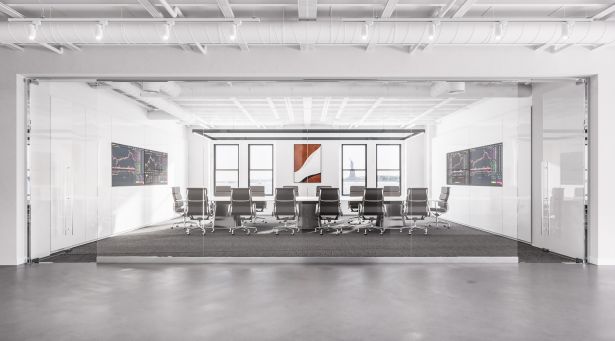
Is 17 Battery a longtime property for Moinian?
Yes, we have owned 17 Battery for over 25 years. There are currently 13 stories of office, and another 20 stories above it of residential that were converted right after we purchased it. So while this is a newer topic in today’s market, Joe Moinian already has experience in pivoting to this type of strategy, and his past success gives TMG a unique perspective on how to accomplish it.
When will the new conversion be completed?
For 90 John Street, as I mentioned we have the entire building back and have commenced conversion, so we expect a TCO in 2024. For 17 Battery, if we do move forward with our plan, it would likely be at the beginning of 2025.
Talk about how the decision was made to do this conversion, and how you arrived at exactly how much office space to convert.
The amount of space to convert was mostly a function of roll. We had several vacant spaces and near-term expirations throughout the building at 90 John Street, while at 17 Battery the top three floors happen to be rolling within the next 24 months, save for one or two tenants. We have longer-term expirations and availability further down in the building. So any tenants that do not have a near-term roll, we are able to relocate downstairs in the building.
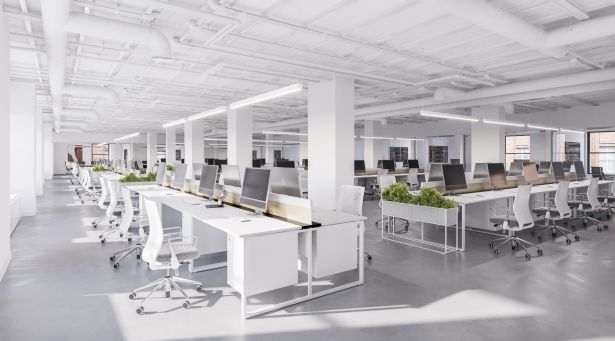
Tell me about the housing this will create.
At 90 John Street this will be 115 rental apartments, and at 17 Battery it would be 170 rental apartments over three floors — both projects range from studios to two-bedrooms. The majority will be studios, with the larger units by the corners.
Are there significant amenities for the residential part of the building?
We have a resident-only lounge space that is beautifully appointed at 90 John Street. At 17 Battery, we already have Ocean, one of our premiere luxury rental properties, in the upper part of the building. So all the amenities at Ocean, including the high-end Lifetime fitness, will be available to residents at 17 Battery.
What can you tell us about what this conversion will mean to Moinian’s bottom line?
If you think about what’s involved in leasing office space, it’s downtime, free rent, TI dollars, and paying a broker fee and other marketing costs including the construction time of build-outs over six to 12 months instead of reallocating those resources to a residential product that would have immediate demand upon completion and rapid lease-up. Those efficiencies at that number make the rent revenue look much more favorable for us, especially over the longer term when you factor in re-lease costs and timing both being significantly less on the residential side.
Talk about Moinain’s investment in otherwise improving their office buildings.
Separate from conversions, we still have an office focus at the end of the day, and investing in them is how we’re making the buildings stand out in this competitive market. At 17 Battery, we created a new lobby and a new public plaza. We’re renovating the elevators and installing art and flowers in the lobby. All these things are still important in order to differentiate in this competitive market. Even though we would be solving for a portion of the building by the conversion, we’re not neglecting the rest of the building.
Speaking of renovating, tell me about 110 East 58th Street — Plaza Medical — where you just completed a large deal with Northwell and have a new lobby.
Similar to 17 Battery, this is another building we’re reinvigorating, all the way up to a name change. It was referred to as the Galleria building because of the residential component, which remains. But office-wise, this is a prime building for medical tenants due to its location and midsize floor plates, not to mention that the majority of the tenants are already medical. The biggest visible change is that we’ve created a new lobby at street level on the 58th Street side. In the past, while many appreciated the atrium lobby, it has been a bit challenging for ADA access. The 58th Street lobby solves that while still maintaining our atrium space and its block-through access. It feels like an oasis in the middle of the busy 57th Street and Park Avenue area. So we’re looking to reposition the retail in the atrium area and cater to a sense of place, giving tenants and visitors a spot they can enjoy in the middle of the day. We have a high-quality sushi restaurant and a cafe in the lobby, plus seating for the public. We’re really just trying to create the right atmosphere there.
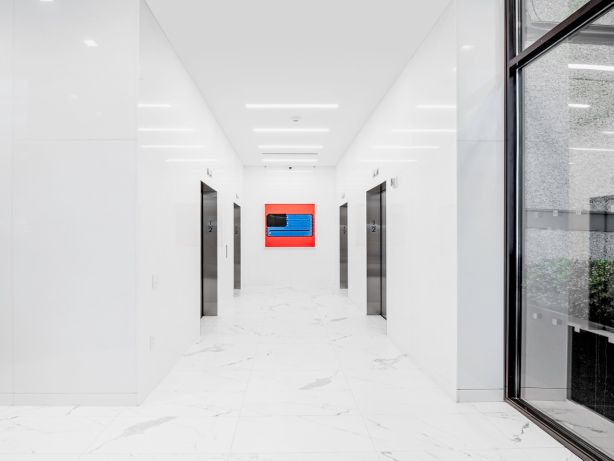
Northwell has taken a significant block of space in the building. Tell us about that.
That’s a great stamp of approval for our investments. This new lobby is one of the reasons we’re able to get tenants the quality of Northwell, which took a 12,000-square-feet full floor for 10 years. They’re the biggest employer in New York state, and a tremendous player in the medical field. So for us to land a tenant like that to join others like Lab Corp and Quest Diagnostics, who are already in the building, speaks volumes about the repositioning.
